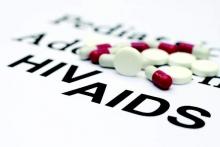A great volume of HIV and AIDS research enters the medical literature every month. It’s difficult to monitor everything, so here’s a quick look at some notable news items and journal articles published over the past few weeks.
Patients who are stable on antiretroviral therapy should be offered a less intensive care package that can lead to improved outcomes while saving resources, including less frequent clinic visits, out-of-clinic drug refills, and reduced laboratory monitoring, according to an analysis by the World Health Organization.
Short-cycle antiretroviral therapy is a viable option for adherent HIV-infected young people who are stable on efavirenz-based ART, according to a study in the Lancet HIV.
In a Thai study of HIV-infected patients treated for GI tract inflammation during acute infection, most restored their immune activation back to baseline levels after 24 weeks of combination antiretroviral therapy, although most acutely infected patients did not restore their CD4+ T cells after 96 weeks of cART.
Second-line antiretroviral therapy treatment failure in a South African clinic was related to adherence, but could be overcome with careful support, investigators found. However, they said controlled interventions are needed to determine what the optimal approach is to improving second-line outcomes and reducing the need for third-line ART.
Only a moderate antibody response to a single H1N1pdm09 AS03-adjuvanted influenza vaccine was detected in a large cohort study of HIV-infected patients with high baseline H1N1 seroprotective titers. The use of booster vaccinations is warranted in order to achieve higher immunogenicity in this population, researchers said.
A longer time with diagnosed HIV infection, rather than age, is the dominating factor contributing to psychological morbidity and lower quality of life in patients, according to a study of HIV-positive adults.
A British study found that, in settings with low tuberculosis prevalence, early start of combined antiretroviral therapy and intensified TB case finding protocols may significantly reduce the incidence of TB in HIV-infected patients.
Despite significant improvements in antiretroviral therapy prescription and viral suppression in recent years in the United States, racial and ethnic disparities persist, particularly for black persons, according to an analysis of Medical Monitoring Project data.
The investigational malaria vaccine RTS, S/AS01 was well tolerated when given to children with WHO clinical stage 1 or 2 HIV disease along with high antiretroviral and co-trimoxazole use. Investigators said children with HIV disease could be included in future RTS,S/AS01 vaccination programs.
A special supplement to the journal AIDS Care, on the psychological and sociomedical aspects of AIDS/HIV in children, is available open access to all interested.
The association of the HIV p24 antigen with blood donation was highly significant and poses a great risk to recipients if screening of blood donors is only carried out by HIV antibody detection, according to a Nigerian study.
Resistance mutations against nucleos(t)ide reverse transcriptase inhibitors antagonized the development of HIV-1 resistance against the integrase strand transfer inhibitor dolutegravir, but not against the INSTIs raltegravir or elvitegravir, a study found.
Resistance to protease inhibitors was detected in 22% of HIV-infected patients with viral loads greater than or equal to 1000 cps/mL, in a study of second-line antiretroviral therapy in Sub-Saharan Africa. Researchers said intensified support for adherence, viral load and drug resistance testing, and third-line drugs would be necessary to ensure long-term ART success in the region.
A study in JAIDS found that adding HIV testing at birth has the potential to improve the number and timing of antiretroviral therapy initiation of HIV-infected infants, leading to a decrease in infant mortality.
The effects of HIV and childhood trauma remained evident at 12-month follow-up in HIV-infected women, despite greater uptake of antiretroviral therapy and improved HIV disease status, according to a study in AIDS Care.
HIV patients with hyperglycemia have severe dyslipidemia and immune activation, a retrospective study revealed, and highly active antiretroviral therapy is an important impact factor of glucose and lipid metabolic disorders.
The prevalence of non-albicans Candida spp. is high among HIV-infected individuals with low CD4 count, placing them at higher risk of invasive infections, according to a study in the International Journal of Infectious Diseases.
On Twitter @richpizzi


